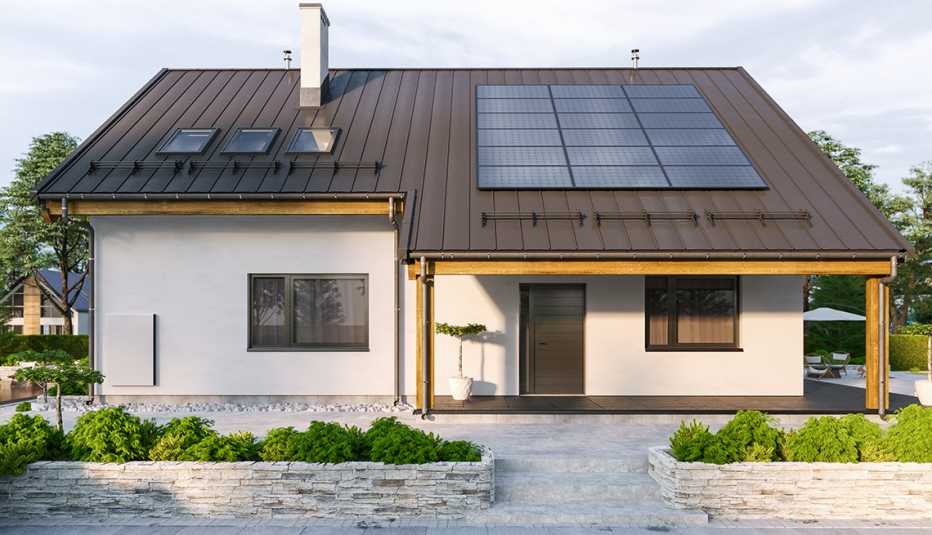AARP Hearing Center
Heat pumps are having a moment. They aren’t used much in the U.S. — yet — but they are more efficient than traditional gas furnaces and better for the environment. And despite the name, heat pumps can be used to provide both warmth and cooling.
Matt Bowers, 43, lives in a 2,800-square-foot house in Rochester, New York. He heats his home, he says, “with the same amount of electricity that’s put out by a hair dryer.” The yearly heating portion of his electric bill is approximately $250, about what it costs, on average, to heat most U.S. homes for just two months. Bowers, who is the owner of Rochester Passive House Consulting, uses an air source heat pump to heat and cool his home.
Although Bowers’ home was already built to ultra-energy-efficient Passive House standards, anyone using a heat pump should see dramatic savings on their home energy bills, according to the American Council for Energy Efficient Economy (ACEEE). That’s because today’s heat pumps are 2.2 to 4.5 times more efficient than traditional gas furnaces, according to a recent report from consulting firm McKinsey on building decarbonization.


Heat pumps also are quiet, offer more control than a gas furnace and are being touted as one of the best ways to help fight climate change, since they run on electricity and don’t give off carbon dioxide and carbon monoxide (as fossil-fuel-burning gas furnaces do). Plus, recent federal legislation provides tax credits of up to $2,000 to get people to make the switch, and state rebates can sweeten the deal (see box below for more information).
Sound too good? “There aren’t a lot of drawbacks to owning a heat pump,” says Amber Wood, director, buildings program, ACEEE. She acknowledges that in the past, there were complaints about noise levels, or that heat pumps don’t work well in cold climates or that they don’t raise the temperature high enough. But new technology has overcome those challenges, she says.
It is true, though, that if you live in a region where it can be extremely cold for long periods of time, your heat pump might not be able to keep up with the heat loss from the structure itself, and you’d need a backup heat source powered by gas or electricity that kicks in quickly.
In any case, if your house is drafty or poorly insulated, a heat pump probably shouldn’t be your first line of defense. You need to take care of those issues first before you invest in either a heat pump or a traditional heating system. In addition, Wood says, if your house is properly weatherized, “you can likely install a smaller system — another place to find savings.”
Today only about 14 percent of homes nationwide use heat pumps. But concerns about the climate and a host of government incentives mean that could change. And in some states, such as Washington, heat pumps are now mandated for all new residential construction (with an allowance for gas use for backup heating in extreme cold).
How does a heat pump work?
Think of a heat pump like an air conditioner that can blow hot air as well as cold.
A heat pump draws heat either from outdoor air or from underground, depending on the type of system you have—regardless of the season. The air is run across a refrigerant, which, when compressed, gets superhot or, when depressurized, gets cold.
The most common system is an air source heat pump (ASHP), which has an exterior unit (similar to a central air-conditioning unit) that connects via a tubing system to one or more indoor air handlers or “heads.” A ground source heat pump (GSHP) does similar work but pulls heat from the ground instead of the outside air.





































































